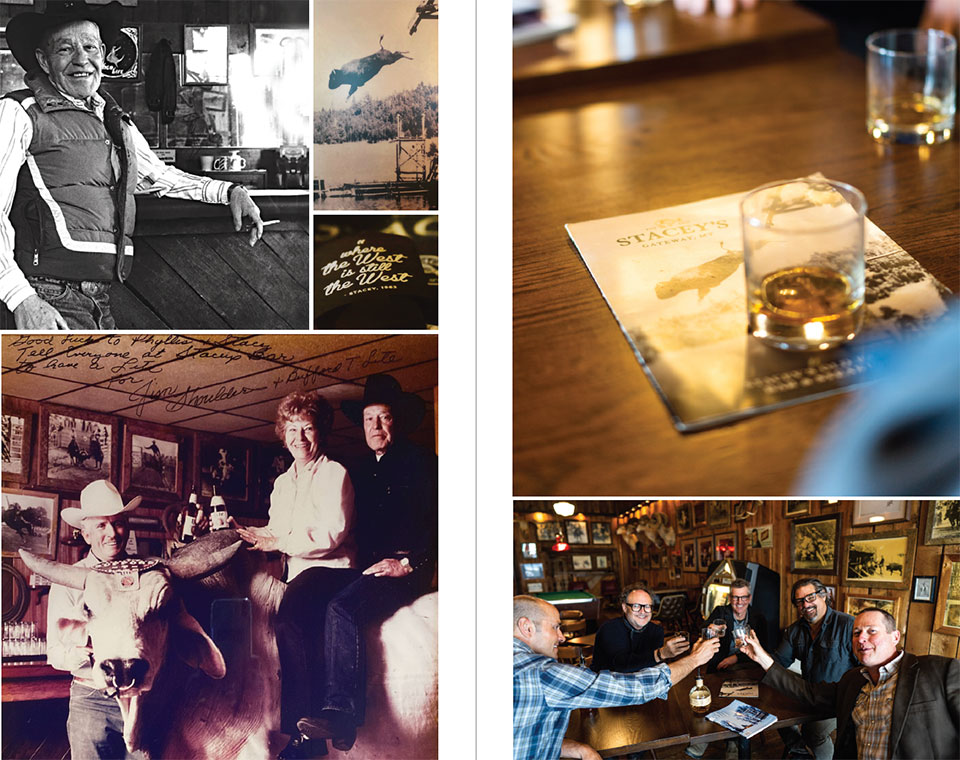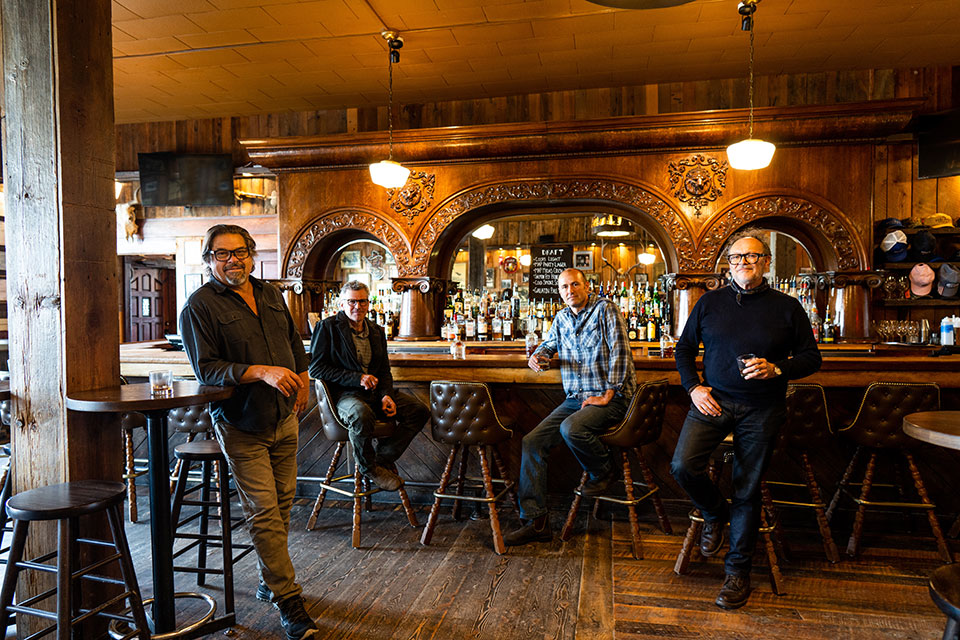Design Discourse in an Old Saloon
An architect, artist, builder, and interior designer walk into a bar…
Moderated and edited by Aaron Kampfe | Location photography by Kene Sperry
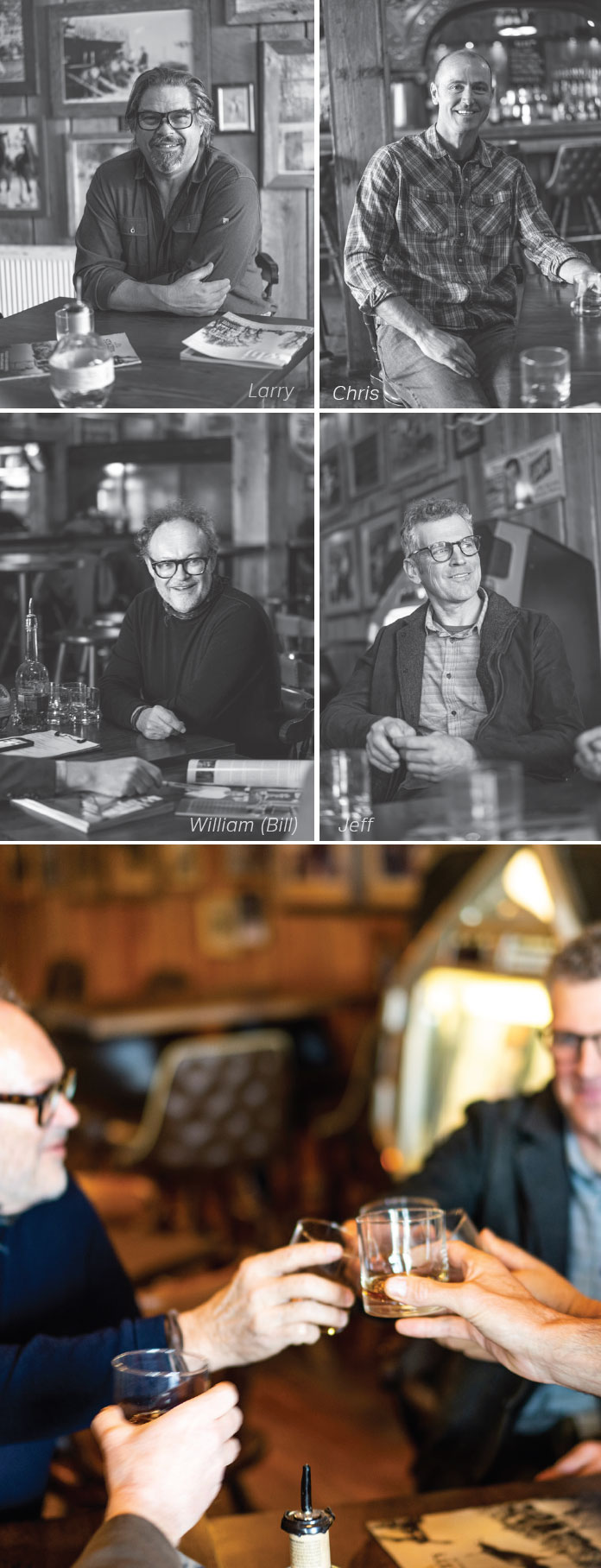
In the spring of 2021, Western Home Journal hosted four well-established Bozeman-area construction industry professionals for a
discussion of the current state of architecture, construction, design, and craft in southwest Montana and the Intermountain West.
The banter began with whiskey.
Founding principal of Pearson Design Group, Larry Pearson, has been on the forefront of western architecture since the 1990s. Inspired by regional materials and natural landscapes, Larry creates architectural narratives that unify people with their surroundings.
Larry’s whiskey selection: Blanton’s
At his core, Chris Lohss, founder and owner of Lohss Construction, remains a craftsman. Since 1993, he has been melding ancestral building methods with cutting-edge construction technology to create truly extraordinary Montana homes.
Chris’s whiskey selection: Sazerac Rye
With an interior design career that spans decades and the North American continent, William (Bill) Peace has a breadth of work that reflects the true lifestyle and authentic values of the firm’s clients. Peace Design bridges the western vernacular with modern sensibilities.
Bill’s whiskey selection: Yellowstone
Craftsman, designer, and businessman, Jeff Brandner is all parts artist. One of the most unique design firms in the country, Brandner Design works with architects, designers, builders, and private clients to create architectural elements, one-of-a-kind furniture, decorative wood and metalworks, and fine art.
Jeff’s whiskey selection: Buffalo Trace
whj: How do you all know each other?
Chris Lohss (Lohss Construction): I first worked on a project with Larry back around 2000. It was a little trapper’s cabin that was constructed the “old school way.” We had the mill onsite next to where we dropped the logs. The place was very authentic to the area. We stayed out there in the winter during construction and staying warm required both a furnace and fire in the fireplace.
Larry Pearson (Pearson Design Group): Bill and I met at a Christmas party about 20 years ago and we’ve been hanging out ever since.
Jeff Brandner (Brandner Design): I came to Montana around 2005 and that is when I got connected with the local building industry. Inevitably, I crossed paths with all these guys and we have worked on many projects together.
Bill Peace (Peace Design): Larry and I have worked together since the early 2000s but it was really in 2016 when Chris, Larry, and I, as well as another partner, Brett Evje, had the idea to buy the Old Saloon in Emigrant, Montana. To renovate the building was a natural project for a builder, architect, and interior designer. Brett brought bar and restaurant management experience to the table. Our latest endeavor is Stacey’s in Gallatin Gateway and here we are today.
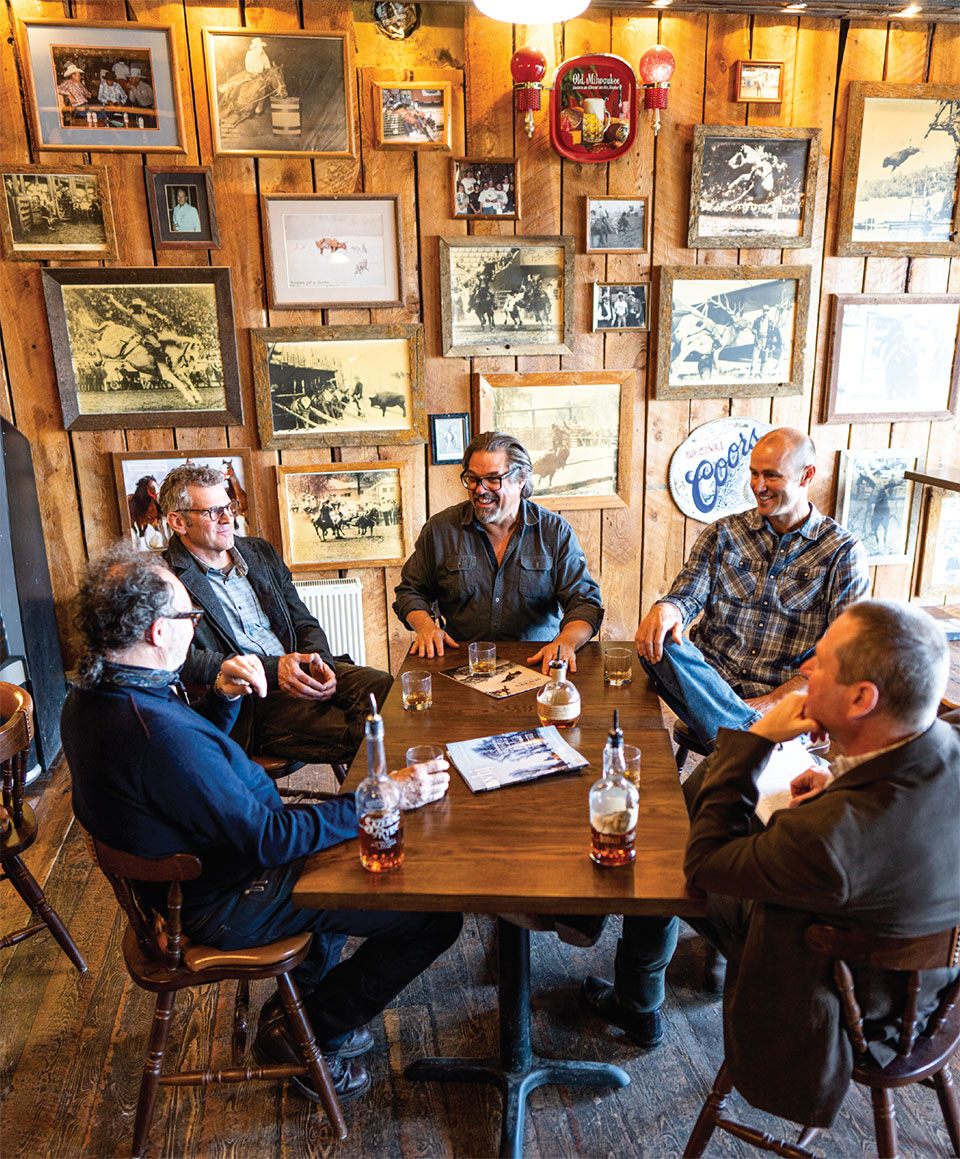
whj: What has changed during your 25-plus years of working in design and construction in Montana?
Larry: Twenty-five years ago, people wanted the “Old West,” architecture based on the log cabin and ideas of life on the frontier. Ten years ago, “rustic modern” or “mountain modern” evolved with white walls accented with reclaimed timbers, clean lines, more spartan interiors, and flat rooflines. Now the contemporary is swinging back around to more traditional homes.
Bill: The first home we worked on in the Yellowstone Club was around 2003. Everything was dark-toned with heavy sheen. Although still classic cabin style, those projects have become less popular compared to the lighter, richer tones desired today.
Larry: The pendulum swings. We’ve gone from shellac to toasty brown and back again.
Jeff: Design and styles are always changing. This is what continues to make our work interesting. Big log homes with shellac have been abandoned for something more refined.
Bill: Lifestyles have changed. We are seeing a refocus on needing to comfortably host large family gatherings. Also, with people spending more time in their Montana homes, they are working from them and thus need more advanced work spaces.
Larry: Homeowners want more light, more glass, more open spaces, and open-plan layouts. We are having logs whitewashed, installing better lighting, integrating the latest technology, and designing for more communal living.
Bill: Authenticity comes across to me with rustic and native materials—be that a modern house or a more traditional house. If you bring in reclaimed timber and stone, you’re in the Montana world.
Chris: Demand has really accelerated in the past 25 years. Our clients are often world travelers and very experienced in business. Their expectations are high but we make sure their expectations are realistic. We are busier than ever here in Montana and COVID-19 has only added to the demand with people seeking refuge in their second homes. While clients often want immediate gratification, we have to slow them down and manage expectations in terms of costs and construction timeframes.
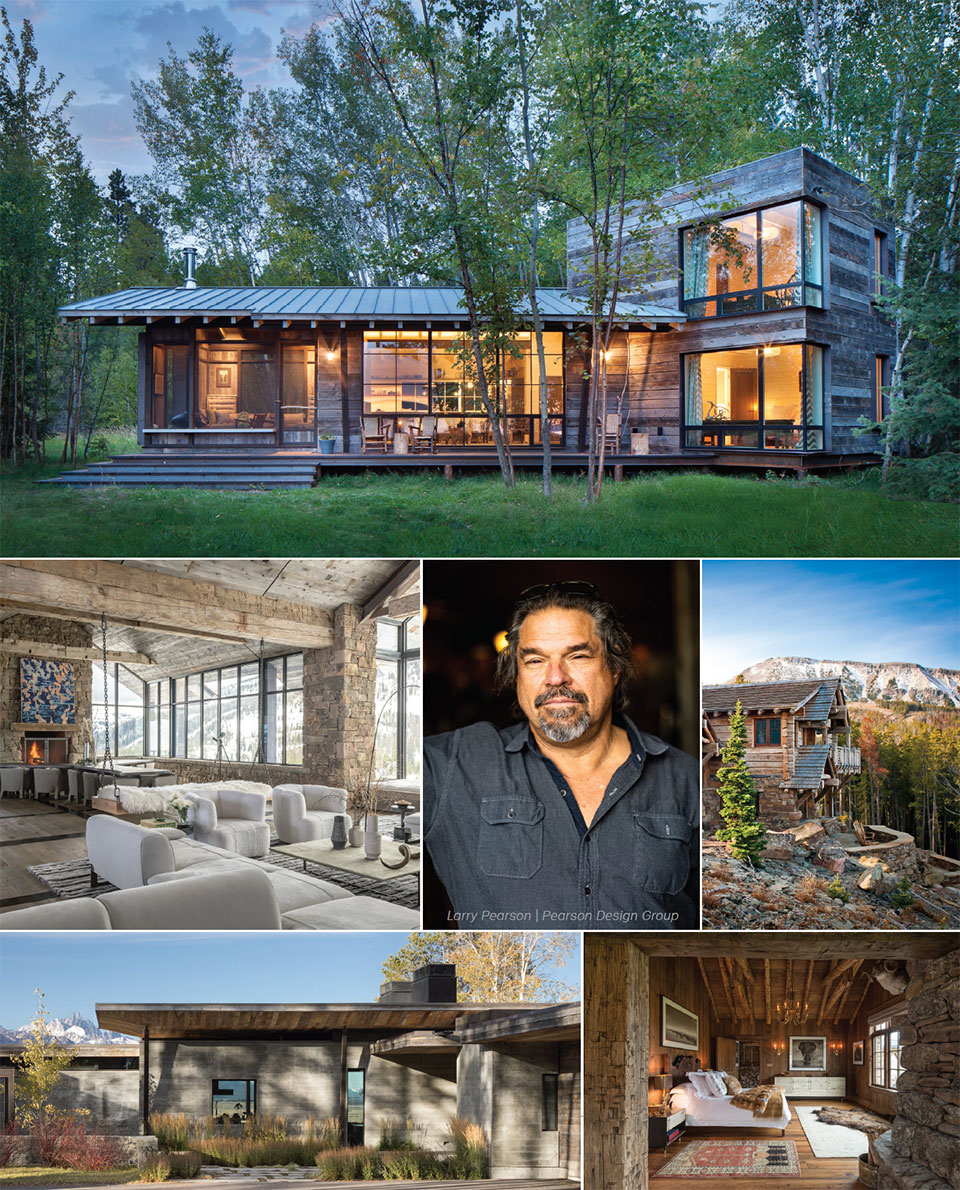
whj: Can you share the role of collaboration as part of your process?
Bill: One of the more rewarding things that we do is work together—create collectively. Larry, the architect, may be in with the first vision, then an interior designer gets involved. A builder is selected and that is the core team.
Other professionals like engineers, landscape architects, technology integrators, and fabricators, like Jeff, come onboard. As many minds start to contribute, we are all aware of that guiding design narrative. All throughout the process, we’re working with the client and referencing the distilled vision. When we work well together, we have a cohesive end product.
Jeff: Even within companies and work teams, everyone has to be united and collaborative. At Brandner Design, we have so many talented and skilled people, but if they don’t work well together, we can’t create extraordinary things.
The client is asking for something that is not (yet) reality. Maybe even a “crazy concept” that others may deem not possible. In order to achieve that vision of a product, we often have to incorporate engineering, chemistry, geometry, and physics. On top of that we have to have the people with the technical expertise and craftsmanship to physically produce it. And then on top of that, they have to be good communicators and team players.
Chris: Success is often not having the “right” answer, but working together to find a “good” or “great” solution to a problem. How we negotiate conflict and come to a resolution is important.
If you have a good relationship and honesty within the team, you can have a productive dialogue. For example, Larry or Bill might say they want the reclaimed white oak core, and you have to be brave and say that it is going to clash with the new oak. Then we discuss it. The creative and flexible architects, designers, craftspeople, and fabricators embrace these types of discussions. We see things on site and wave a flag at the right time and say, “I’d like to suggest this.” Sometimes we get shot down. But having our brains turned on and having an awareness leads to important dialogue and better outcomes.
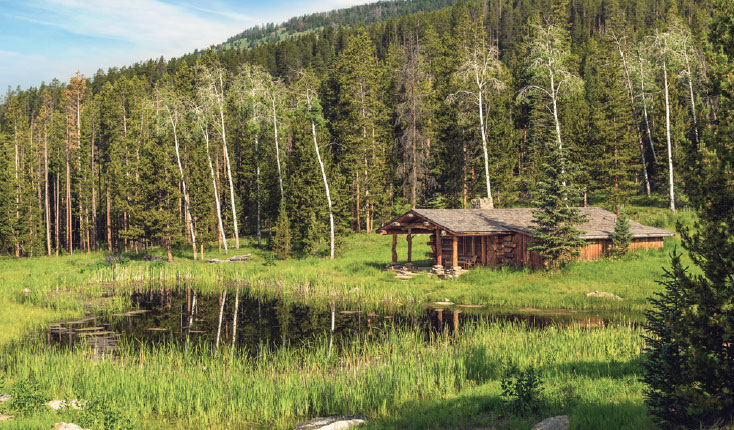
“Anything is possible because there are no rules as to what is possible. What we come back to as designers is recognizing how to be honest with our materials and designs… no matter the technology and trends.”
–Larry Pearson, Pearson Design Group
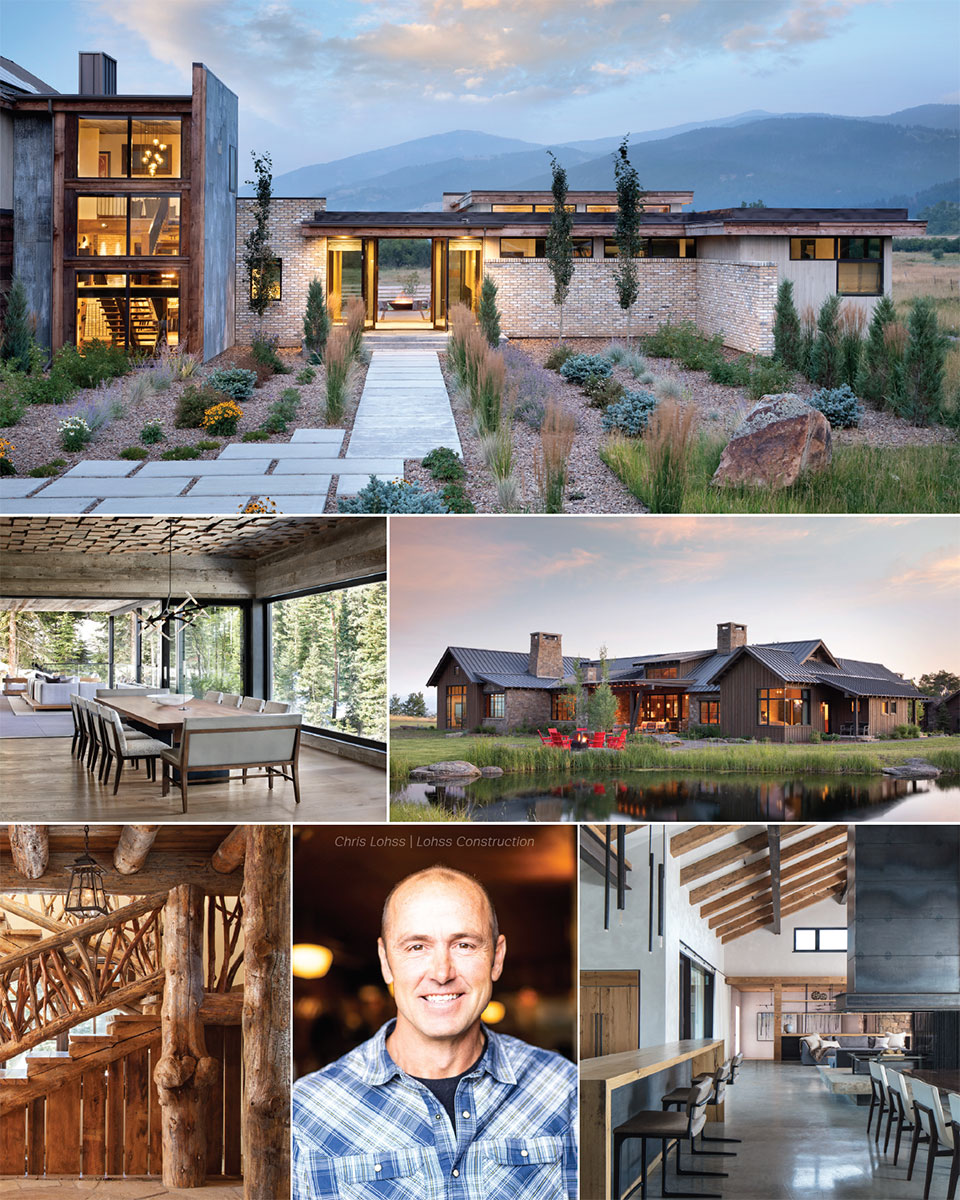
whj: What expectations do newcomers to Montana have?
Bill: Twenty-five years ago, clients wanted to have a western experience. Folks had ideas of coming to Montana to be a “weekend cowboy” and were attracted to the skiing, fishing, hiking, and the open space. While that hasn’t changed, people today want the Montana way to be a greater part of their everyday life as they relocate here. Being a part of the spirit, not just visiting it.
Larry: We still do cater to this ranch-focused client base. The great American experience of riding the range remains alive and well.
Bill: What has evolved is that younger families have come. Their primary residences back in California, Texas, New York, or wherever, have a casual comfort level for the family and guests. They want an open-plan living, kitchen, and dining space. I don’t see us going back. A roofline may change. Walls may have reclaimed timbers or plaster or a combination. But what remains the same is the desire for the authenticity of being in the West.
Larry: When I first started working in Montana, nobody in this area was talking about contemporary design. I came from California and had a background in contemporary design. One of the more prevalent concepts was open floor plans that created space that wasn’t as compartmentalized.
Jeff: We’re seeing a more sophisticated clientele coming to Montana. They want to spend more time here and they also appreciate some of the “urban” aspects of our community. I see this in the commercial side of my business where we’re collaborating on brew pubs, bars, restaurants, and public spaces. Last year, one of our more notable projects was the Ellen Theater marquee in downtown Bozeman. The Art Deco-style renovations are supported and appreciated by locals and out-of-towners alike.
Chris: As part of the construction industry, we have an interesting, and important, role in our community. I see it as a responsibility. On one hand, the market dictates our work. On the other hand, our work influences the market. We all react to the requests of our clientele and, simultaneously, guide how they think about the build environment.
whj: How have materials and technology changed over the years?
Jeff: We strive to select materials that look and feel contemporary, but at the same time are durable and timeless. We do that by staying abreast of trends and innovating, but we’re also setting the trends. Someone will see an installation in a home, at a public venue, in a magazine, or on social media and approach us to reproduce it for another purpose or modify it. This keeps our work always changing and keeps us fluid in our thinking.
Larry: Anything is possible because there are no rules as to what is possible. What we come back to as designers is recognizing how to be honest with our materials and designs… no matter the technology and trends.
Jeff: Over the years, we’ve seen a lot of trends and changes. Currently, brass is back and we’re really having fun with it. Old bars in the ‘20s and ‘30s had lots of brass—trim, fixtures, railings, baseboards… Over the years, the material has patinaed and it has an old, western, smoky feel to it. It has a reflective tone and adds warmth to a piece and the entire room. We’re using thousands of pounds of it for all sorts of purposes.
Chris: We spend a lot of time analyzing materials and finishes. Is the material going to shrink or expand? Will it hold up to the test of time? If it’s on the exterior, how will the weather at that location affect it in both the short and long term? Among other considerations are the cost and the amount of time to treat, assemble, and install the building materials.
Jeff: We’re working with steel in a way that we have never done before. We do less hand-forging. Rather than the heavy steel like we used years ago, our steel products are now smoother, cleaner, and patinaed.
Larry: Architectural rendering software provides some incredible tools. And 3D imaging allows those who don’t intuitively translate 2D to 3D to really see and experience the design. Any kid on a computer can design a house, but let’s not mistake that for good design or architecture. The skills of an architect are even more important because buildings have become much more complicated.
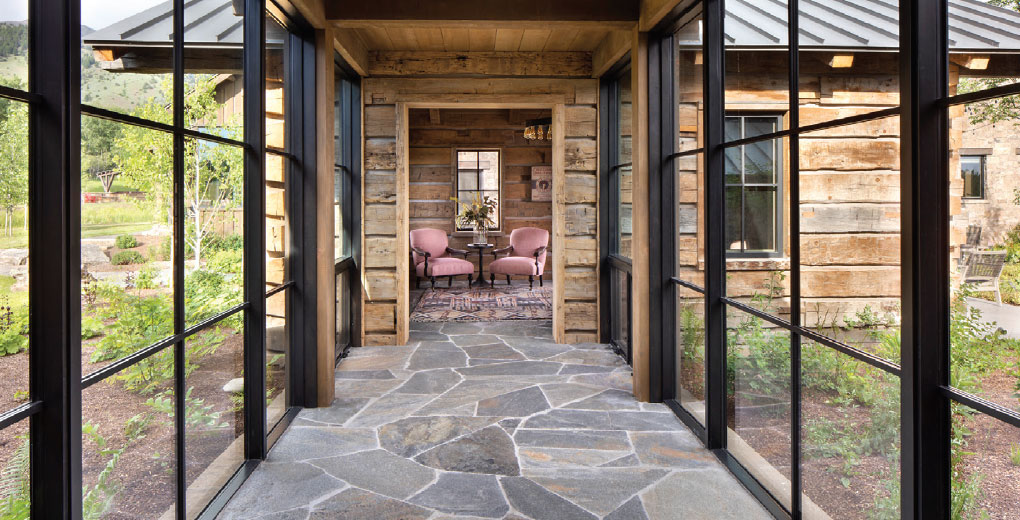
“I love to hear people’s dreams and see architects’ visions, but my team has to figure out how to physically build it.”
–Chris Lohss, Lohss Construction
whj: How do you balance the “over-the-top” with the “down-to-earth”?
Larry: In our architectural process, we often begin with listing every amenity and design concept that the client can dream of. Then we identify the priorities that are either “practicalities” and/or “wish list.” Through our facilitation, clients soon realize that more isn’t always better. “Paring back” results in something more subtle, more sublime. It’s a process of distilling… considering options and narrowing down.
Bill: Many clients are looking to build in a place that they don’t know and don’t understand that well. They are investigating. Our job is to guide them beyond what they’ve seen posted on Instagram or in a photograph they’ve seen in a magazine. We create authentic interiors appropriate for their location.
Jeff: Generous budgets have results in some truly spectacular work. Money affords us the time and materials to be creative and think outside the box. On the other hand, money doesn’t necessarily translate to good taste and certainly not to practicality. Unlimited budget doesn’t translate into unlimited creativity. If fact, some of my most interesting projects are those with limited budgets. It forces us to be very selective.
Chris: I love to hear people’s dreams and see architects’ visions, but my team has to figure out how to physically build it. I recently saw a home design for the Yellowstone Club that looked like something out of The Jetsons. It was certainly cool looking but really not practical for Montana. Lots of the elements needed to be toned back because it really wasn’t feasible.
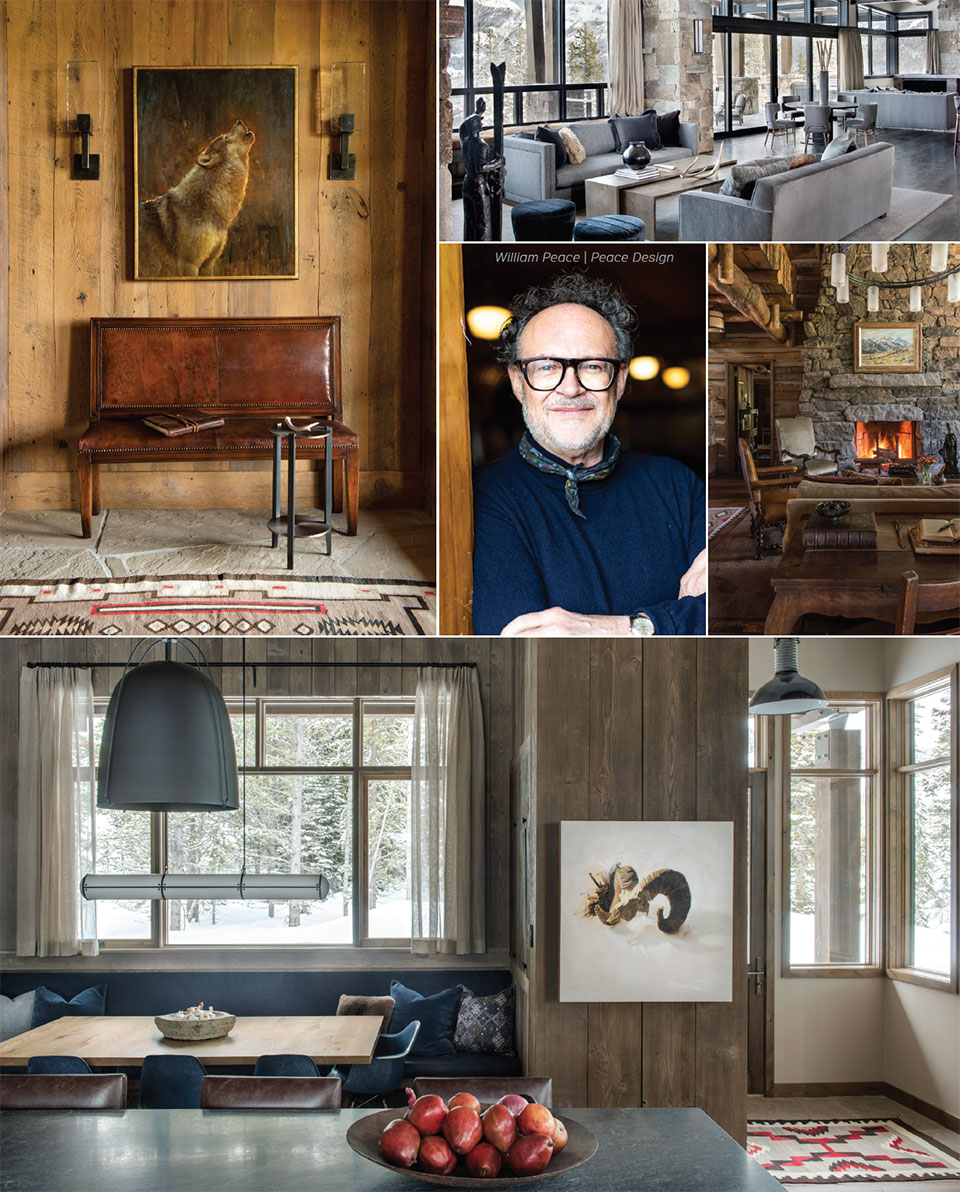
whj: What advice do you have for homeowners looking to build in Montana?
Chris: Always start with really understanding the location. Topography should have a big influence on the design and the construction. Take some time to experience the property by being onsite. The site location may be alpine, riverbank, fairway, ranch, historic district, slope-side… each locale dictates very distinct design and construction engineering requirements.
Jeff: Before building on my own property in Bridger Canyon, I set up a campsite to experience nature and the elements first-hand. When and from where does the wind blow? Where does the snow accumulate? Where does the sun rise and set throughout the year? What are the best viewsheds at different times of day? What are my favorite trees that I don’t want to destroy? I observed where and when my neighbors come and go. All these factors influenced my design and building material choices.
Larry: Understanding the process of distilling is fundamental. We can all come up with creative ideas but distilling those ideas is a measure of a good designer. Right now, there is a tendency to throw everything at it, because something is going to stick. A measure of a mature designer is someone who says, “I don’t need this. I might need this. Let’s abandon this. Simplifying.” Bill and Jeff, I know this is fundamental to both of your processes.
Bill: Editing is one of the most important parts of what we do.
Jeff: When you try to include every great idea, you lose all the ideas. Start big and whittle away.
whj: What is the value of local knowledge?
Chris: As a builder, you’ll always need local expertise and talent. Often finding both the materials and craftspeople are by word of mouth. Who can build that custom door? Who can install and integrate that technology? Who can create a fireplace grate or steel countertop? These are folks you meet on the chairlift at Bridger Bowl, at a trailhead, or just having whiskey at a bar… like right here at Stacey’s.
Larry: As architects we specify materials. Let’s take reclaimed lumber for example. When we specify a piece like an aged recycled rafter, it has to be available. So we need to know where to source it. Because our architects and builders can make a site visit to a reclaimed supplier, they can pick the best rafter for that particular project. Someone from outside the area just can’t be that hands-on and connected.
Chris: I certainly appreciate architects from out of state, but I recognize I’ll be educating them about some of the area’s limits, as well as possibilities, that they didn’t realize. When working with local architects and designers, we already have a base knowledge of what the area can and can’t offer.
Bill: We are always sourcing unique items and new craftspeople. We know the local gallery owners, artists, and artisans. We’ve been in their shops and studios. We know the best iron workers, masons, and furniture makers. Our responsibility at Peace Design is to work with many sources to deliver the unique and custom interiors that our clients deserve.
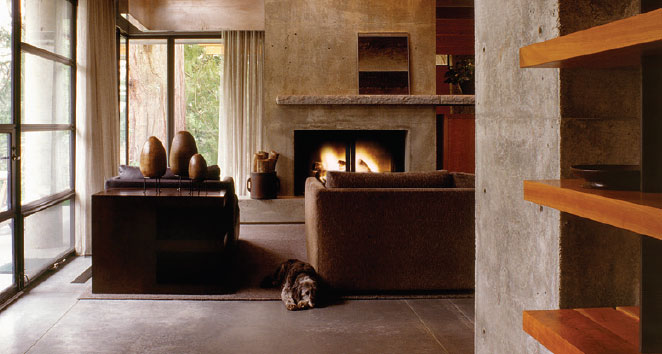
“We are always sourcing unique items and new craftspeople. Our responsibility at Peace Design is to work with many sources to deliver the unique and custom interiors that our clients deserve.”
–William Peace, Peace Design
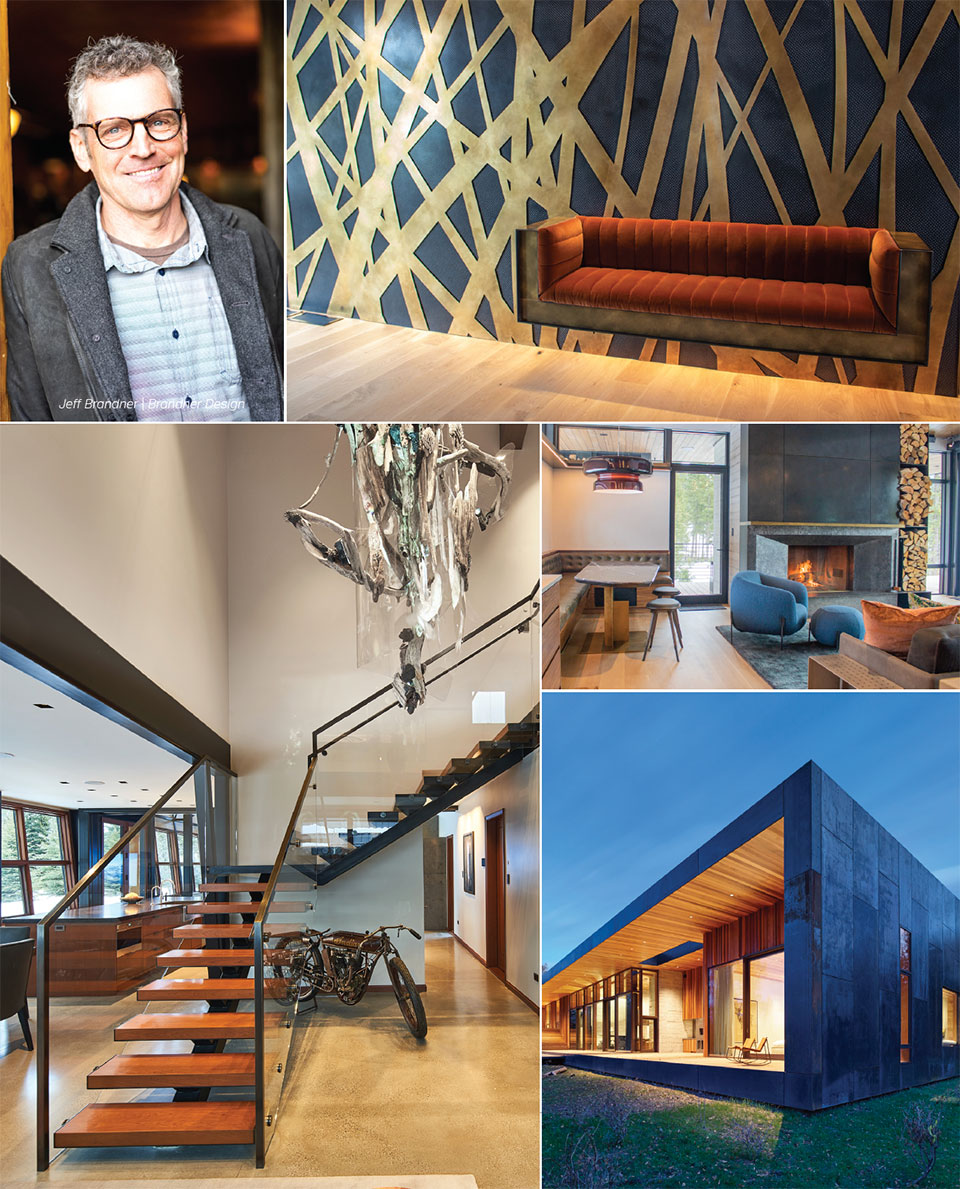
“When you try to include every great idea, you lose all the ideas. Start big and whittle away.”
–Jeff Brandner, Brandner Design
whj: How have Bozeman-based designers created their own brand?
Larry: Twenty-five years ago, Bozeman was considered a cow town with a college. Since the 1990s, there has been an interesting evolution in our community. Bozeman has been singled out and recognized. Folks fly in from across the country and hire our teams to work on projects across North America. Here in this community, we have refinement and talent that is a national resource.
Jeff: The creative designs from the Bozeman area have gotten national and international attention. On the custom commercial side of our business, we have hundreds of installations across the country. We create a broad range of products like steel wall panels, wood and metal fixtures, and install them in venues like restaurants, bars, high-rise lobbies, theaters, and airports. The quality of life in the Bozeman area attracts talented folks and those talents are being recognized.
Chris: From a builder’s perspective, it is a real privilege to work in this area. Montana State University has produced some very fine architects and many of them have stayed in Montana. Homes that we collaborate on are truly exquisite and have become examples for good design, not just in the West but across the entire country.
Larry: Not only has the area become an architectural design hub, but we also have some of the most unique and creative artists, artisans, and craftspeople. This ranges from folks working out of their backyard workshops to larger operations like Brandner Design that contract on projects all over the country.
Bill: Our firm has studios in both Atlanta and Bozeman. It is interesting to compare and contrast. Our process in each location is the same in terms to deeply listening to the client, creating designs that are authentic to place, understanding the local history and topography… but the ultimate style choices are strikingly different, as they should be. My clients, and even just casual acquaintances, are often surprised with the unique “look and feel” of Montana design and its sophistication.
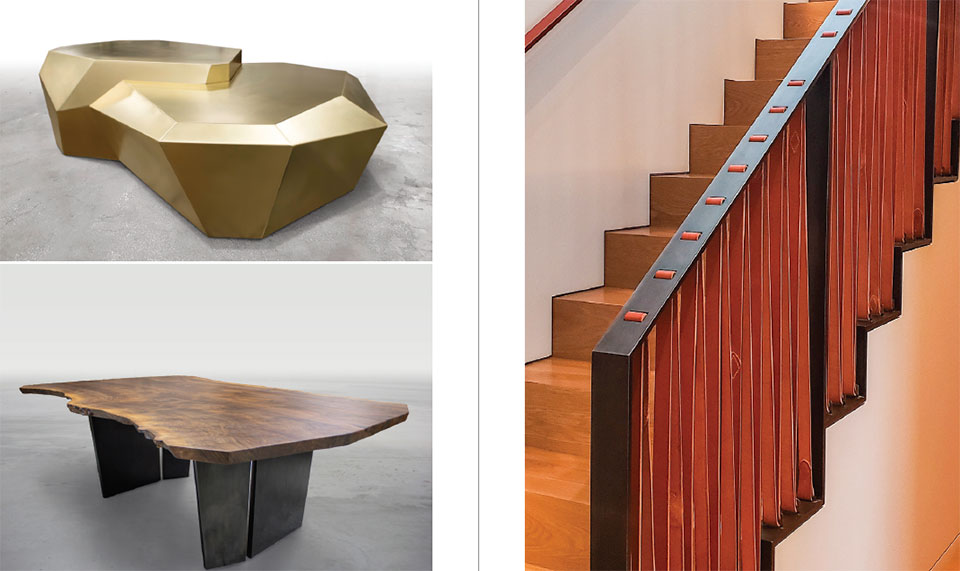
After the last round of libations was finished and the informal symposium wrapped up, the men began to disperse. They exchanged firm handshakes and bear hugs before making their way to the saloon’s exit.
No barroom brawl that day in Stacey’s, just lively dialogue and friendly camaraderie.
